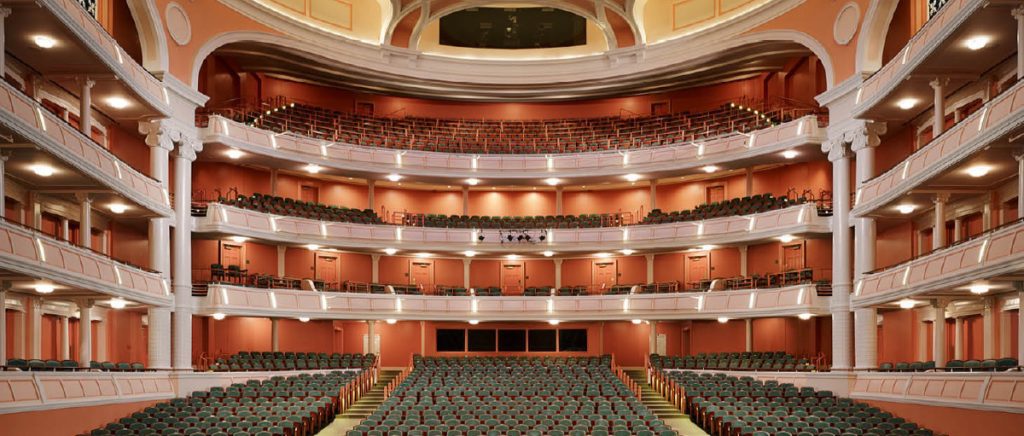Great architecture and the arts have always shared a profound connection. The built environment influences how we experience creativity, from theaters and museums to studios and public art spaces. In South Carolina, cultural institutions play a vital role in shaping artistic communities, and the architecture that houses these creative endeavors is just as inspiring as the works displayed within them. Thoughtful design enhances engagement with the arts, fosters collaboration, and creates lasting civic pride.
The Role of Architecture in Cultural Spaces
Architectural design has a direct impact on how art is experienced and produced. A well-designed museum enhances visitors’ interaction with exhibits, a performing arts center elevates the audience’s engagement with production, and an artist’s studio can shape the creative process itself. These spaces are more than functional—they are works of art in their own right.
Successful cultural buildings often emphasize flexibility, natural light, acoustics, and accessibility. Modern designs incorporate open floor plans, moveable walls, and multi-purpose areas to accommodate various art forms. Sustainable features, such as passive lighting and ventilation, make these spaces more inviting and efficient.
Notable Arts and Cultural Spaces in South Carolina
- Gaillard Center (Charleston, SC) The Gaillard Center is Charleston’s premier performing arts venue, blending neoclassical grandeur with modern performance technology. Initially built in the 1960s, the center underwent a $142 million renovation in 2015 to transform it into a world-class cultural destination. Its stately exterior, inspired by French neoclassical architecture, evokes the elegance of historic Charleston. At the same time, its 1,800-seat concert hall boasts state-of-the-art acoustics designed for symphony performances, ballet, and Broadway productions. The center also includes a stunning lobby and grand ballroom, reinforcing its role as a civic gathering space.
- Gibbes Museum of Art (Charleston, SC) One of South Carolina’s most significant cultural institutions, the Gibbes Museum of Art, is a testament to the power of blending historic and contemporary design. Initially opened in 1905, the Beaux-Arts-style building was renovated in 2016 to include modern gallery spaces, natural light enhancements, and a reimagined atrium that connects past and present. The renovation highlights how adaptive reuse can elevate a historic space while maintaining its original grandeur.
- Peace Center (Greenville, SC) The Peace Center for the Performing Arts in Greenville is a stunning example of how architecture can shape the performing arts experience. Situated along the Reedy River, the complex integrates a grand concert hall, an intimate theater, and an outdoor amphitheater designed to maximize acoustics and audience engagement. The center’s contemporary aesthetic blends seamlessly with Greenville’s historic downtown, reinforcing the city’s commitment to arts and culture.
- Columbia Museum of Art (Columbia, SC) With its striking postmodern façade, the Columbia Museum of Art is one of the state’s most dynamic artistic venues. The museum underwent a significant redesign in 2018, transforming its interior into open and adaptable exhibition spaces, an innovative education center, and a large public courtyard encouraging interaction between visitors and the arts. Its design exemplifies how museums can be more than just places for viewing art—they can be creative hubs for community engagement.
- North Charleston Coliseum & Performing Arts Center (North Charleston, SC) This multipurpose facility demonstrates how architecture can support large-scale cultural events. Featuring a 1,300-seat theater and a 14,000-capacity coliseum, the space hosts everything from Broadway productions to symphony performances. Its modern design focuses on acoustics, visibility, and flexibility, ensuring an immersive experience for all attendees.
Designing the Future of Arts Spaces in South Carolina
As South Carolina’s arts scene grows, so does the need for adaptive, inclusive, and inspiring spaces. Emerging trends in cultural architecture include interactive public art installations, artist live-work spaces, and sustainable, community-driven arts centers. Cities like Charleston, Columbia, and Greenville are embracing these ideas, ensuring that the state remains a leader in creative placemaking.
By investing in well-designed arts venues, South Carolina supports the arts and enhances civic pride and economic vitality. Whether through historic preservation or cutting-edge design, the architecture of cultural spaces plays a crucial role in shaping how we engage with creativity and each other.
For more on this topic, see:
North Charleston Performing Arts Center
IMAGE

Gaillard Center – Charleston, SC

